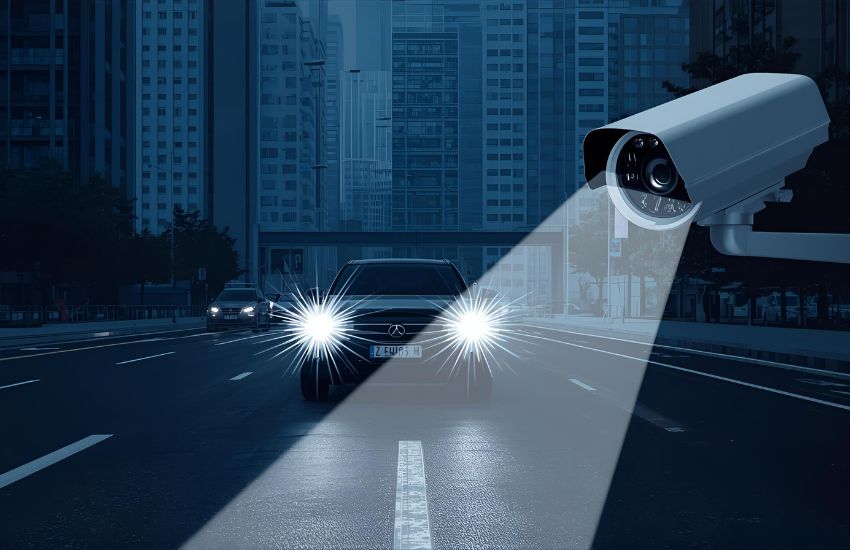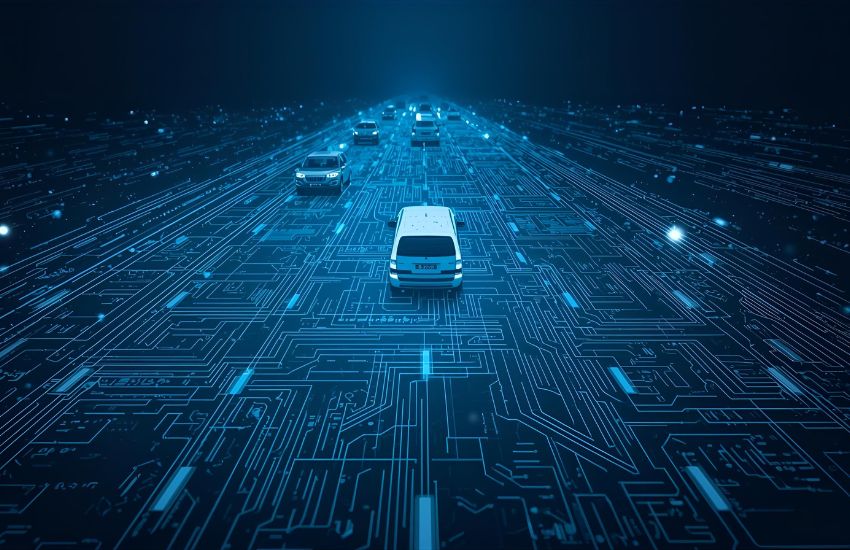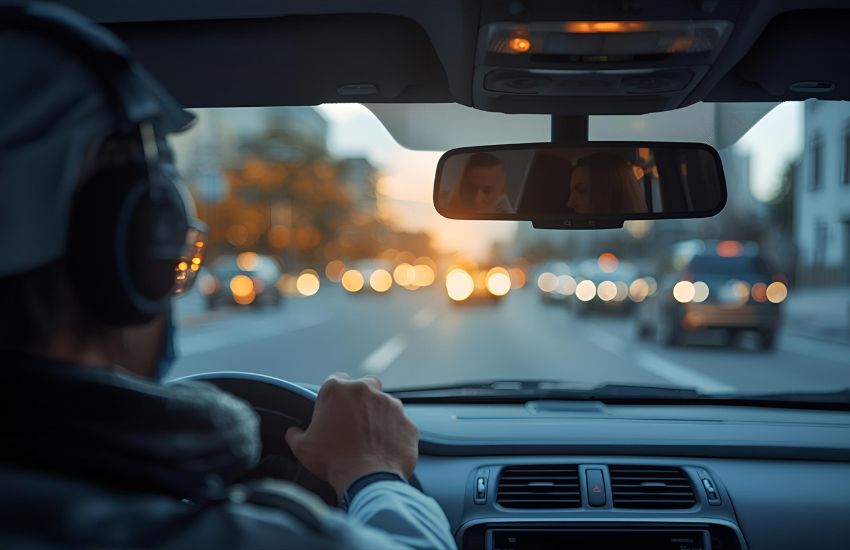Capturing license plates with accuracy—whether day or night—requires more than just a standard camera. You need a technology-driven solution that ensures every plate is recorded clearly and in real-time, even in challenging conditions. As security threats evolve, so must your surveillance strategy, and that’s where modern LPR (License Plate Recognition) technology steps in.
Modern surveillance and LPR (License Plate Recognition) camera technology capture license plates accurately using high-resolution sensors, infrared illumination, and advanced software. These cameras are strategically positioned to reduce glare and motion blur, ensuring clear images day and night. Integrated analytics enhance recognition, enabling law enforcement and security systems to identify vehicles quickly and accurately.
In this blog, you’ll explore how modern surveillance systems equipped with LPR, license plate recognition, and specialized license plate cameras are transforming the way license plates are captured. You’ll also learn what makes these systems reliable, how they integrate into your existing security setup, and which features—like sensor technology, zoom, and night vision—are most critical for achieving consistent, accurate results.
How LPR and License Plate Recognition Camera Systems Improve Real-Time Security and Plate Detection

License Plate Recognition (LPR) and plate recognition camera systems play a crucial role in enhancing real-time security by enabling accurate and efficient plate detection. When you deploy a professional-grade camera system designed for capturing license plates, you gain access to advanced imaging technologies that ensure precision, even in high-speed or low-light conditions. These systems are engineered to identify and capture license plate details clearly using built-in IR capabilities, which provide excellent visibility during nighttime or in poor lighting.
A well-integrated camera system supports real-time monitoring by instantly processing visual data and recognizing license plate numbers. The process relies on technologies like optical character recognition, allowing the camera to convert images of license plates into readable data for your security or access control system. Plate recognition camera systems help capture license plate details consistently, supporting a wide range of applications including traffic monitoring, facility access, and perimeter protection.
Whether you are securing a commercial site or a residential property, capturing license data accurately can prevent unauthorized access and improve response times. With the precision of IR-enabled surveillance camera systems and the reliability of modern license plate reader camera setups, you can be confident in your ability to maintain security and capture actionable data whenever needed.
See more about...LPR Camera License Plate Detection
Choosing the Best License Plate Reader and Camera Technology for Accurate License Plates Capture

Selecting the right technology to capture images of license plates is essential when your goal is to enhance access control systems, improve surveillance, or support enforcement operations. To ensure consistent and precise license plate reading, you must consider a combination of hardware features, integration options, and advanced capabilities tailored to your specific security needs.
Focus on Advanced License Plate Technology
To achieve reliable and accurate license plate recognition, it’s important to invest in advanced license plate systems equipped with automatic license plate recognition (ALPR). These systems are designed to read plates in various lighting and environmental conditions using real-time processing. The best license plate reader setups utilize high-resolution sensors, fast image processing, and enhanced optics to capture license data accurately, even from fast-moving vehicles.
Understanding Camera Types and Features
When choosing a camera license plate solution, consider whether you need a bullet camera for long-range monitoring or an IP camera with flexible placement options. Look for models with motorized zoom to focus on plates at varying distances, and infrared or low-light capabilities for 24/7 performance. A wide field of view helps monitor multiple lanes, while a narrow view provides better detail at a single entry point.
Integration with Access Control and NVR Systems
To get the most out of your license plate recognition solution, it’s important to integrate it with your NVR and access control systems. This allows you to store and manage captured footage efficiently while also enabling automated gate access, visitor tracking, and detailed logging. Whether you’re overseeing commercial premises, gated communities, or public parking areas, seamless integration enhances your overall video security strategy.
Tailoring the System to Use Cases
Different types of license plate recognition systems serve different purposes. For example, law enforcement agencies require mobile or roadside systems for monitoring highways, while parking enforcement officers benefit from fixed-position readers. In all cases, the ability to read plates under diverse conditions is key to operational success.
By prioritizing technologies that support advanced license plate capture and integrating them with scalable systems, you can ensure that your infrastructure meets today’s security challenges with precision and efficiency.
See more about…License Plate Capture
Integrating Advanced License Plate Camera Systems with IR, Zoom, and Night Vision for Reliable Surveillance

Effectively monitoring vehicle activity requires camera technology that goes beyond standard imaging. When you integrate advanced license plate camera systems into your commercial security or home security infrastructure, you gain the tools to capture plates with clarity, speed, and consistency, even in low-light conditions and from challenging angles.
Why Camera Technology Matters for Plate Recognition
Modern surveillance cameras are designed with powerful enhancements, including IR (infrared), zoom lens, and night vision capabilities, which ensure that plate images are legible regardless of vehicle speed, lighting, or weather. High-resolution sensors, such as 4MP options, work alongside IR LEDs to improve visibility and detail in various lighting environments, allowing you to capture clear images at day or night. Features like focal length adjustment and FOV (field of view) optimization allow you to monitor specific entry points or wide parking zones efficiently.
Enhancing Security through Real-Time Intelligence
Advanced camera technology supports real-time decision-making by enabling real-time alerts when a specific license plate is recognized. These alerts can be triggered when a plate is detected that matches a watchlist, streamlining vehicle access control and bolstering safety. This level of monitoring is ideal for managing entrance and exit points in restricted areas or for identifying the make and model of vehicles for security purposes.
Maximizing Data Storage and Integration Capabilities
In addition to live monitoring, many systems allow for onboard storage via an SD card or seamless integration with video management systems. This means you can store and review footage as needed to meet compliance, auditing, or investigative needs. Whether your goal is to capture more detail at distances up to 50ft or tailor your setup for specific security requirements, today’s license plate camera systems offer unmatched flexibility
See more about…License Plate Capture
Conclusion
In conclusion, modern license plate camera systems offer the precision and reliability required to capture accurate vehicle data in any environment. Whether you’re monitoring high-traffic areas or managing controlled access points, the best cameras include features like IR, motorized zoom, and advanced software to enhance detection capabilities. These systems can produce clear visuals, even when capturing images at night, thanks to technologies such as 3MP and 4MP resolution sensors.
With the ability to operate in real time and respond to critical events, these solutions help you identify vehicles quickly and accurately, reinforcing your overall security posture. From commercial premises to residential areas, advanced surveillance cameras are designed to capture accurate plate information day or night, making them essential components of any modern security system.
See more about…LPR Camera Home Install
Frequently Asked Questions (How License Plates Are Captured Accurately with Modern Surveillance and LPR Camera Technology)
What is the LPR system for license plate recognition?
A License Plate Recognition (LPR) system is an advanced technology used to automatically capture and identify vehicle license plates through cameras and specialized software. It utilizes optical character recognition (OCR) to convert plate images into readable data. LPR systems are commonly applied in traffic monitoring, parking management, toll collection, and security enforcement, ensuring efficiency and accurate vehicle identification.
How does the LPR camera work?
An LPR (License Plate Recognition) camera works by capturing high-resolution images of vehicles and using advanced algorithms to identify license plate numbers. It employs infrared technology for clear visibility in low light and fast image processing to extract plate details. The data is then stored or compared with databases for security, traffic management, and law enforcement purposes.
How does Lpr technology work?
LPR (License Plate Recognition) technology works by using high-resolution cameras and advanced image processing algorithms to automatically capture and analyze vehicle license plates. Infrared sensors help detect plates in various lighting conditions. The system converts the plate image into text, which is then matched against databases for identification, monitoring, security, traffic management, or access control purposes.
How is license plate recognition done through image processing?
License plate recognition uses image processing to detect plates, correct perspective and lighting, segment characters, then apply optical character recognition (OCR) to read text. Preprocessing steps include grayscale conversion, noise reduction, edge detection, and morphological operations. Modern systems add plate localization with machine learning and post-processing to validate, format, and match plate numbers against databases.
